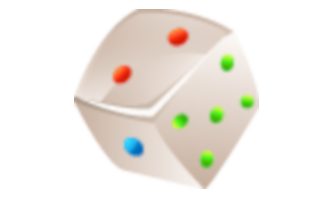Organic compounds
Science, Grade 6
Organic compounds
Study Guide

Organic compounds
Flash Cards

Organic compounds
Quiz

Organic compounds
Worksheets

Organic compounds
Games

Study Guide Organic compounds Science, Grade 6
❮
1
/
3
❯
ORGANIC COMPOUNDS Overview Organic chemistry is the study of Carbon compounds. Because there are so many of these in living things, organic chemistry is sometimes thought of as living chemistry. The Carbon atoms of organic compounds are very unusual. Because a Carbon atom has four valence electrons spread around the atom in the outer energy level, Carbon can bond in many directions around itself with four covalent bonds. It is this ability to bond with up to four other Carbon atoms that gives Carbon compounds their strength. This is especially true with diamonds where the crystal structure is very strong. Lesson Checkpoint: What makes a Carbon compound strong? © Copyright NewPath Learning. All Rights Reserved. Permission is granted for the purchaser to print copies for non-commercial educational purposes only. Visit us at www.NewPathLearning.com.
Pure Carbon Compounds Other types of pure Carbon compounds include hollow spheres of Carbon atoms called fullerenes and hollow tubes called nanotubes. Both of these structures are extremely strong. Another large group of organic compounds are called hydrocarbons. These compounds contain only Carbon and Hydrogen atoms. Some examples of hydrocarbons are shown below. HydroCarbons, like methane, with their names ending in “ane” have only single covalent bonds. Hydrocarbons with double or triple bonds between the Carbon atoms are named with the endings “ene” and “yne”. Methane is considered a saturated hydrocarbon because it has as many Hydrogen atoms bonded in it as possible. On the other hand, ethane and ethyne are considered unsaturated because, if it were not for the double and triple bonds, more hydrogen atoms could be bonded. Lesson Checkpoint: What is a hydrocarbon and how do they differ from one another? © Copyright NewPath Learning. All Rights Reserved. Permission is granted for the purchaser to print copies for non-commercial educational purposes only. Visit us at www.NewPathLearning.com.
Organic Chains Many kinds of organic compounds can be linked together to form long chains called polymers. The single unit that is repeated over and over again in a polymer is called the monomer. One of the most important natural polymers is a protein. The monomer, which is the building block, is called an amino acid. Other natural polymers include silk and cotton while synthetic, or man-made polymers, include plastic and nylon. Lesson Checkpoint: What is the relationship between a monomer and a polymer? Important Polymers As mentioned above one of the most important polymers in living things are proteins. Others include carbohydrates such as starch and cellulose. These are made from repeating units of the sugar, glucose. In organisms, the third largest category of organic compounds is the lipids. These large molecules are the fats and oils that living things need. Last, are the nucleic acids. The famous nucleic acid, DNA, is a very long polymer that makes up our genes and chromosomes and is responsible for almost everything about us. It is the length of DNA that makes it possible for so many gene combinations. Lesson Checkpoint: Name a few polymers that are important to living things. © Copyright NewPath Learning. All Rights Reserved. Permission is granted for the purchaser to print copies for non-commercial educational purposes only. Visit us at www.NewPathLearning.com.
